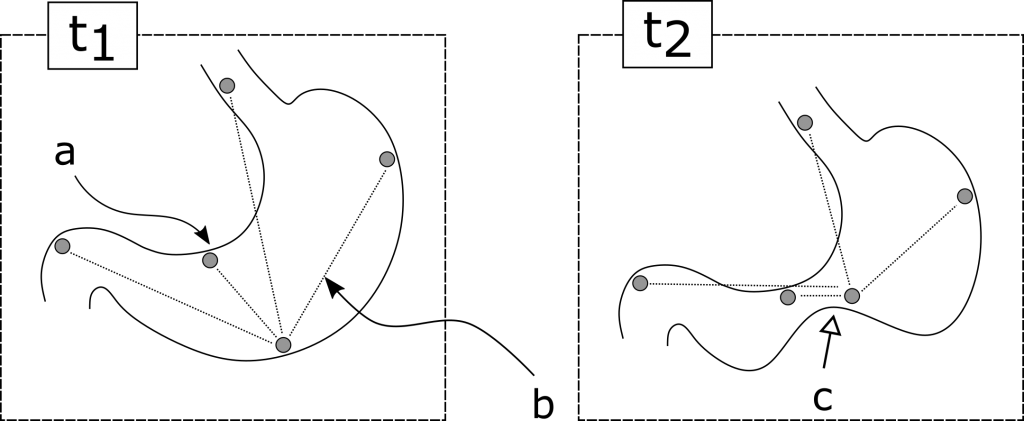Our patent goes PCT
A new system to deliver coordinated neural electrostimulation from a group of implanted neurostimulators has been designed by researchers of the University of Seville. The system is able to estimate the relative positions of the implants while using the stimulus artifacts as an intra-body communication tool. By these means, it is possible to reduce energy consumption during implant-implant communications while providing therapies for gastrointestinal motility problems among others.
Electrical stimulation of the nervous system has been used to treat a number of health conditions. A remarkable example of the success of these therapies is the cochlear implant. This medical device can restore hearing function by delivering electric current to the inner ear. Other examples include deep brain stimulation for the treatment of Parkinson’s disease or the bionic eye for the restoration of sight. Typically, these devices rely on an implantable unit that delivers the electric stimuli, and an external unit that controls the implant. Unfortunately, other medical problems that could potentially benefit from these types of therapies present additional challenges that are currently being explored by the scientific community.

The gastrointestinal tract is a complex body system: it is a collection of anatomical structures and organs whose main function is absorbing and processing nutrients. It contains few hundreds of enteric neurons distributed from the mouth to the anus, and is also innervated by the central nervous system. Loss of physiological bowel function can be caused by neurological diseases, injuries, or congenital defects, resulting in neurogenic bowel dysfunctions (NBDs). Motility problems of different severity grades are common in patients suffering from these medical conditions. However, in those patients suffering from a neuropathy affecting intrinsic neurons, colonic neurostimulation is promising an alternative to agresive surgical treatments. These and many other pathologies would benefit from a coordinated neurostimulation action occurring at different body locations in a timely fashion. This would require bulky implants and complicated surgery. While the current technology allows for implanting miniaturized neurostimulators that can harvest energy from ultrasound or microwaves, to date these devices cannot establish interactions to deliver a coordinate action in this types of scenarios. Here we propose collaborative network of neurostimulators able to execute coordinated actions to deliver timely stimulation at different body locations.
